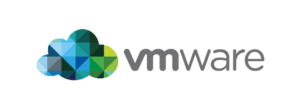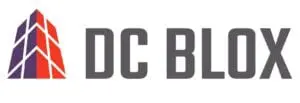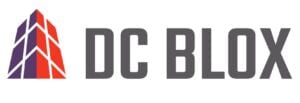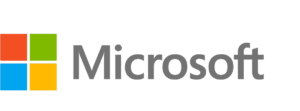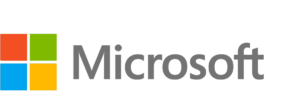Complete Article Outline
MDR Overview
In today’s ever-evolving cybersecurity landscape, organizations are facing an increasing number of cyber threats that can cause serious damage to their data and infrastructure. As a result, there is a growing need for effective cybersecurity solutions that can detect, prevent, and respond to these threats. One such solution is Managed Detection and Response (MDR).
What is MDR?
MDR is a cybersecurity service that provides continuous monitoring, detection, and response to threats across an organization’s entire IT environment.
MDR combines cutting-edge technology, advanced analytics, and human expertise to detect and respond to cyber threats in real-time, minimizing the damage that can be caused by these threats.
The importance of MDR for organizations cannot be overstated. With cyber threats becoming more sophisticated and targeted, it is critical for organizations to have the ability to detect and respond to these threats quickly and effectively. MDR provides organizations with the peace of mind that their data and infrastructure are being continuously monitored, and any potential threats are being addressed before they can cause significant damage.
How MDR Works
MDR works by leveraging advanced technology, such as machine learning and artificial intelligence, to analyze vast amounts of data from an organization’s IT environment in real time. This data is then correlated and analyzed to identify any potential threats. When a threat is detected, MDR uses a combination of automated and human-led responses to contain and neutralize the threat.
Benefits of using MDR for cybersecurity include:
-
- Continuous monitoring: MDR provides continuous monitoring of an organization’s IT environment, ensuring that any potential threats are identified and addressed in real-time.
-
- Advanced threat detection: MDR uses advanced technology and analytics to detect even the most sophisticated cyber threats, including zero-day attacks and advanced persistent threats.
-
- Rapid response: MDR provides rapid response to threats, minimizing the damage that can be caused by cyber attacks.
-
- Cost-effective: MDR is a cost-effective solution for organizations that may not have the resources or expertise to manage their cybersecurity in-house.
In addition to these benefits, MDR also provides organizations with access to cybersecurity consulting services. These services can help organizations identify and address any vulnerabilities in their IT environment, and provide guidance on best practices for cybersecurity.
MDR and Cybersecurity Threats
Cybersecurity threats are becoming more sophisticated and targeted, making it increasingly difficult for organizations to protect their data and infrastructure.
Common cybersecurity threats
While the use of cloud technologies and virtual computing expands across the globe, Businesses and organizations will continue to face a growing number of dangers. This sounds like a reason to not move into cloud-based resources, but it’s really more of a call to action for those who seek to gain the benefits of cloud while being vigilant in their approach to security. Below are some common threats that Cloud Technologies Inc’s MDR solutions are tailored to monitor and mitigate:
-
- Ransomware attacks: A type of malware that encrypts an organization’s data and demands a ransom to restore access.
-
- Phishing attacks: A type of social engineering attack that tricks users into providing sensitive information, such as passwords or credit card numbers.
-
- Advanced persistent threats (APTs): A targeted and sophisticated cyber attack that can go undetected for months or even years.
-
- Zero-day attacks: Attacks that exploit previously unknown vulnerabilities in software or hardware.
MDR can help organizations prevent, detect, and respond to these and other cybersecurity threats by providing continuous monitoring and advanced threat detection. MDR can also provide rapid response to threats, minimizing the damage that can be caused by cyber attacks.
Advantages of MDR
MDR can also be compared to other cybersecurity services, such as Managed Security Service Provider (MSSP) and Security Information and Event Management (SIEM). While MSSP and SIEM can provide some level of cybersecurity protection, MDR offers several unique advantages, including continuous monitoring and advanced threat detection. CDW’s white paper on MDR highlights the growing need for Managed Detection and Response (MDR) as organizations increasingly rely on remote and virtual solutions and remote employees.
MDR surpasses traditional cybersecurity approaches
The advantages of Managed detection and response solutions come due to the proactive approach it takes to monitoring, event-based communications and alerts, and expert intervention plans. Below is a list of these proactive event-based actions:
-
- Continuous monitoring: MDR provides continuous monitoring of an organization’s IT environment, ensuring that any potential threats are identified and addressed in real-time.
-
- Advanced threat detection: MDR uses advanced technology and analytics to detect even the most sophisticated cyber threats, including zero-day attacks and APTs.
-
- Rapid response: MDR provides rapid response to threats, minimizing the damage that cyber-attacks can cause.
-
- Reduced costs: MDR is a cost-effective solution for organizations that may not have the resources or expertise to manage their cybersecurity in-house.
-
- Access to expertise: MDR provides organizations with access to cybersecurity experts who can help identify and address vulnerabilities in their IT environment.
How MDR and Cloud Technology Interact
Cloud technology is an integral part of modern IT infrastructure. It provides flexibility, scalability, and accessibility to businesses, making it easier for them to expand and grow. MDR is no exception when it comes to the use of cloud technology. In fact, MDR is well suited for cloud-based services due to its ability to detect and respond to threats across various environments.
Cloud-based MDR Benefits
Scalability: Cloud-based MDR services can scale up or down depending on the size of the organization and it’s changing needs.
Accessibility: Cloud-based MDR services can be accessed from anywhere with an internet connection, making it easier for businesses to monitor their security posture.
Cost-Effectiveness: Cloud-based MDR services typically offer a cost-effective alternative to traditional on-premises solutions.
With the implementation of any business cloud solution will always come risks and challenges that should be documented and researched. One potential challenge is ensuring the security of cloud-based MDR services themselves. It’s important for organizations to choose a reputable cloud provider and to follow best practices for securing their data in the cloud.
Choosing an MDR Provider
As a professional and certified provider of Managed Detection and Response strategies and solutions, Cloud Technologies Inc. has identified the many factors that must be considered when choosing an MDR provider and solution.
Experience and expertise: Choose an MDR provider with extensive experience and expertise in the cybersecurity field.
Flexibility: Look for an MDR provider that offers flexible service options that can be tailored to meet the specific needs of your organization.
Response time: Ensure that the MDR provider has a fast response time to potential security incidents.
Cost: Compare the costs of different MDR providers and choose one that fits within your budget.
Some examples of MDR providers include Secureworks, Rapid7, and FireEye, as well, of course, as Cloud Tech Inc.
Best Practices for MDR
To ensure the most effective use of MDR, organizations should follow best practices, including:
-
- Regularly reviewing and updating security policies and procedures to reflect the latest threats and technologies
- Conducting regular security awareness training for employees to help them identify and report potential security incidents
- Implementing multi-factor authentication (MFA) for all user accounts to help prevent unauthorized access
- Conducting regular vulnerability scans and penetration testing to identify potential vulnerabilities before they can be exploited
- By implementing these best practices, organizations can maximize the effectiveness of their MDR solution and minimize the risk of cybersecurity incidents.
Conclusion
In conclusion, cybersecurity threats are constantly evolving, and organizations must take steps to protect their data and infrastructure. Managed Detection and Response (MDR) is a powerful tool for identifying and responding to potential security incidents before they can cause significant damage.
By combining MDR with cloud technology, organizations can benefit from increased flexibility and scalability while still maintaining a high level of security. To do this, organizations should follow best practices, regularly review and update their security policies and procedures, and stay up to date with the latest cybersecurity trends and technologies.
Ultimately, MDR is an essential component of any comprehensive cybersecurity strategy, and organizations that fail to implement it are putting their data and infrastructure at risk. Take action today to protect your organization from cybersecurity threats by implementing MDR and following best practices.










